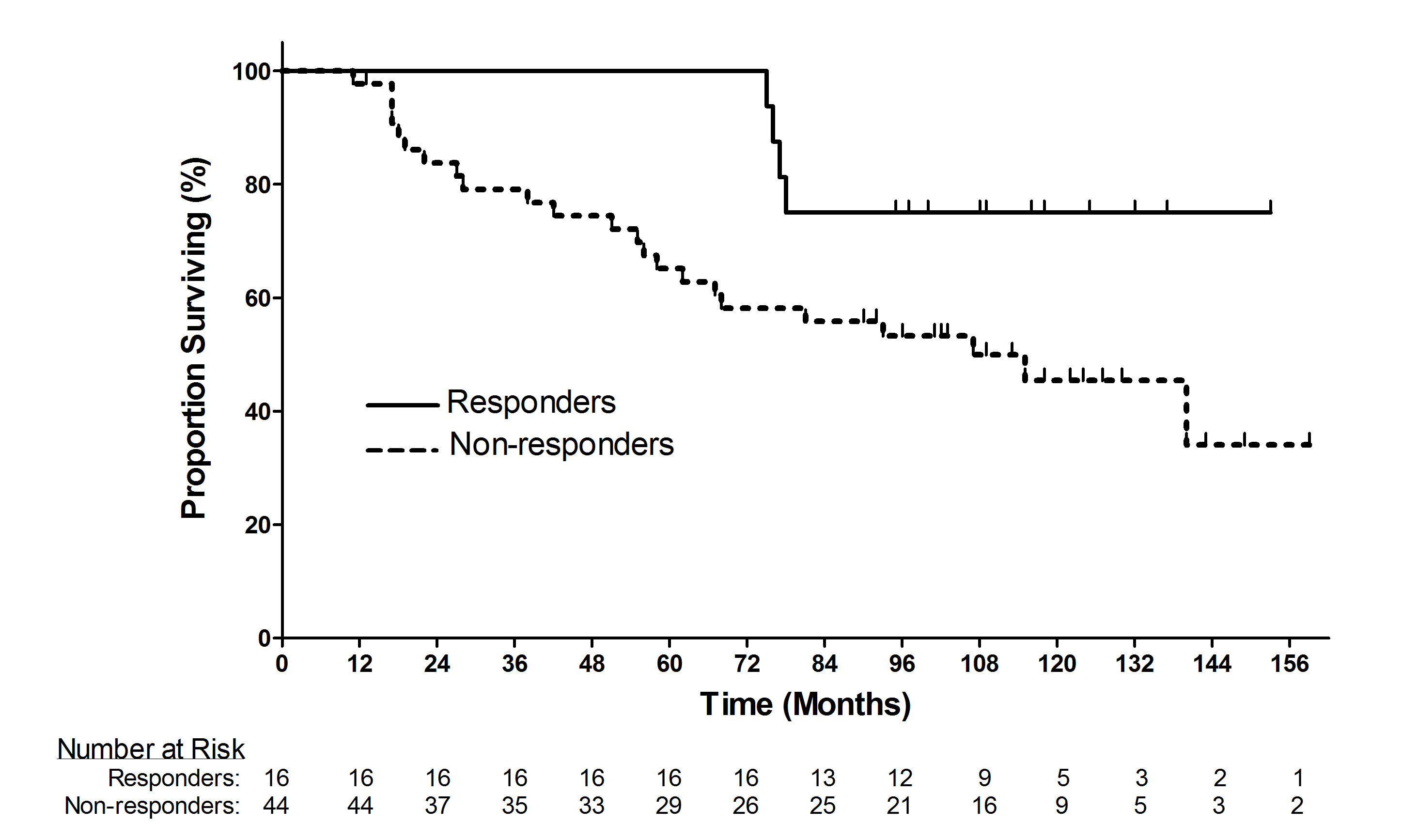Back to 2016 Annual Symposium Abstacts
Renal Salvage after Renal Artery Stenting Improves Long-term Survival
J. Gregory Modrall, MD, Eric B. Rosero, MD, Shirling Tsai, MD, Melissa L. Kirkwood, MD, Mujtaba Ali, MD, John Rectenwald, MD, Carlos H. Timaran, MD, Clayton Trimmer, DO.
University of Texas Southwestern Medical Center, Dallas, TX, USA.
OBJECTIVE: The CORAL and ASTRAL Trials cast doubt on the benefits of renal artery stenting for patients with renal artery occlusive disease. However, the outcomes for patients with chronic kidney disease (CKD) were not analyzed separately in those trials. We hypothesized that patients who experienced a significant improvement in renal function after renal artery stenting would have improved long-term survival, compared to patients whose renal function was not improved by stenting.
METHODS: Sixty patients with stage 3 or worse CKD were treated with renal artery stenting for renal salvage. Patients were categorized as “responders” or “non-responders” based on postoperative changes in glomerular filtration rate (eGFR) after renal artery stenting. “Responders” were those patients with an improvement of at least 20% in eGFR over baseline; all others were categorized as “non-responders.” Survival was analyzed using the Kaplan-Meier technique and compared between responders and non-responders using the log-rank test. Cox proportional hazards regression was used to identify predictors of long-term survival.
RESULTS: The median age of the cohort was 66 years (interquartile range, IQR, 60-73 years). Median preoperative eGFR was 34 mL/min/1.73 m2 (IQR 24-45). CKD stages included stage 3 (65%), stage 4 (23%), and stage 5 (12%) CKD. Sixteen of 60 patients (26.7%) derived a sustained improvement in renal function after renal artery stenting. Responders experienced a median improvement in eGFR of 45% over baseline (IQR 35-61%), compared to a 13% decrease in eGFR for non-responders (P<0.0001). Despite having worse baseline renal function (responders eGFR = 30 mL/min/1.73 m2; non-responders eGFR = 39 mL/min/1.73 m2;
P=0.05), long-term survival was superior for responders, compared to non-responders (Figure; P=0.046 by log-rank test). A Cox proportional hazards regression model identified improved renal function after renal artery stenting as the only significant predictor of long-term survival (P=0.02; hazard ratio=0.273).
CONCLUSIONS: Successful salvage of renal function by renal artery stenting is associated with improved survival. These data provide a compelling argument for renal artery stenting in carefully selected patients with ischemic nephropathy.

Back to 2016 Annual Symposium Abstacts
|







